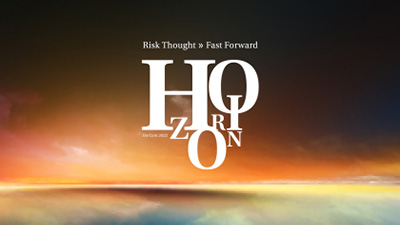With the aftershocks of the pandemic, the ripple effects of the Ukraine war, and more frequent and severe natural catastrophes that affect our climate and today’s population, we are at a crossroads, and the construction sector is no exception.
In the wake of the Ukraine war and the world-wide vulnerability experienced during the Covid pandemic, priorities have changed. The pandemic and its economic effects disrupted our traditional understanding of what is a given and what is to be expected. It also accelerated what the common world view may have thought probable or even possible. When the Ukraine war erupted, it revealed the believe that economic competition would remain the main battleground in our world.
All the while, the voices proclaiming that mankind had chosen a path that is neither sustainable nor compatible with the resources available would not fall silent. Nonetheless, seals and certificates distinguishing low energy, low emissions or sustainably produced products have gained increasing acceptance.
Construction challenged by sustainability and supply chains
In terms of the United Nations’ 17 sustainable development goals, urgent action needs to be taken to combat climate change (goal number 13). Is it just another empty resolution or is there more than meets the eye? The ESG framework has been called into life as a way of assessing companies’ environmental, social and governance performance. It takes a close look at the value creation chain from raw material extraction to the final product and incorporates circular economy principles of reusing resources where feasible. The construction industry is caught in the middle of it all.
Increased cost of materials and energy, rising inflation and a shortage of skilled and unskilled labour pose an unprecedented challenge to an extremely fragmented industry. Its big players often choose to subcontract the majority of their project work. Hence, the availability of subcontractors, the flexibility of their workforce and the accessibility of products and materials are key to even get started.
The pandemic and the Ukraine war have both shown how fragile optimized supply chains are. While efforts were made to optimize costs, maintain quality, and sustain just-in- time principles, companies had to grapple with reduced resilience as a side-effect.
While resilience is essential, the disruption of life – at least in Europe – had an immediate effect on the construction industry, highlighting several areas of concern.
Where is the workforce?
Human resources became scarce. The workforce that used to be able to simply cross borders was no longer available. Travel restrictions were in place – whether due to the pandemic or the war – and many Ukrainian men went back home because they were enlisted in the military. This added to the problems which employers in the construction industry already experienced before the war.
Then there is the psychological effect. Investment decisions are heavily influenced by trust in a stable and predictable environment. Assumptions in financial models, allocation of resources and long-term commitments are all made against the background of expectations of how the world could look tomorrow. The new reality challenges decision makers in that they have to acknowledge that developments thought of being unlikely or just theoretical are realistically after all. Increased tensions between NATO and Russia ignited by a war in the middle of Europe were not something that would figure as a concrete threat scenario in many business plans. It will take time until trust and understanding of the changed dynamics settles in.
Shifting trends in supply chains
The global supply and value chain for construction materials can be divided into four distinct stages:
- raw materials
- material production
- retail and
- end users
Large companies dominate each step and assert their power, especially in the retail phase. The producers of raw materials are mainly global giants and very large aggregate mining providers who offer their large-scale production to leading international construction companies.
Their business must tackle the challenges posed by a construction materials market that is increasingly exposed to events around the world. Hence, the focus is shifting to reshoring, nearshoring and friendshoring.
As military conflicts, increased regulation, trade wars and inflation continue to present new risks, these supply chains will also have to adapt.
The cost of it all
Soaring energy prices, despite having already increased before the Ukraine war, exacerbated problems for the construction sector. Many of the materials used in contemporary construction are based on an energy-intensive production, with steel and cement being only two key examples. In addition to these highly relevant input factors hampering production, the construction operations themselves are equally affected, compounding the effect.
On top of it all, inflation leads to rising construction prices. This makes even public infrastructure authorities reconsider their investment plans in the hope that lump sum contracts or at least partly guaranteed contracts become available again.
Optimism prevails
While the above may seem to draw a gloomy picture, this is not the sentiment perceived in discussions with market proponents. A shift in priorities and a more acute awareness for the changing environment, coupled with necessary steps that need to be taken to move forward prevail. The focus is on productivity and increasingly also on sustainability. What seems to dominate the industry is an unwavering getting-things-done mindset despite the knowledge that there is change on the horizon which is approaching faster than expected.
Related Insights
Sustainable Construction Articles Series
We invited stakeholders along the value chain to shed light on their strategies, new success models, opportunities and risks in the fight against climate change as part of a mini-series on the topic of “sustainable construction”.
Is Water Scarcity Dangerous for the European Food Industry?
The risk of water scarcity is one of the key considerations in the risk management and ESG policies of food and agriculture companies. But where there’s acute risks, there are huge opportunities for change: Water scarcity concerns are driving innovation in the food industry and with members of the…
What decision-makers need to consider when it comes to ESG
Future-oriented action strengthens strategic resilience.









